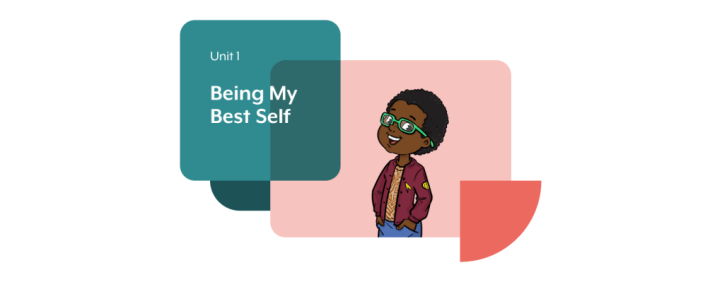“Safe spaces” have gotten a lot of attention as individuals and businesses have begun to recognize the importance of environments where everyone feels welcome and included.
This is especially true in school environments, where students often face challenges and life changes that can leave them feeling vulnerable.
Social and emotional learning (SEL) is a critical component of creating safe spaces, and it’s up to teachers to build it into their lesson plans. We are prepared to equip you with all you need to add SEL to your daily teachings.
In this article, we will:
- Explore what Harmony SEL and Inspire SEL are and how they can help you create a safe space in your classroom.
- Explore what a safe space is and why creating this environment in your classroom and school community is important.
- Share strategies for building social and emotional learning into your lesson plans.
- Learn how to incorporate Harmony SEL and Inspire SEL into your classroom activities.
- Explore additional resources for SEL training for teachers.
What is Harmony SEL?

Harmony SEL, a part of National University, is an Online Learning Portal that equips Pre-K-6th grade teachers with everything they need to integrate SEL skills into the classroom, including training, lessons, activities, videos, stories, games, and songs. Inspire SEL, offers no-cost on-demand SEL training for teachers through courses and resources to build their SEL skillset.
Both Harmony SEL and Inspire SEL have online social emotional learning programs that can be implemented in your everyday teaching in as little as 10 minutes a day.
What is a safe space?
A safe space is where an individual or category of people can feel safe and will not be exposed to discrimination, criticism, harassment, or any other emotional or physical harm.
Safe spaces can be purposefully created groups or simply environments where everyone feels safe. They can also be very beneficial to helping a student calm down and regulate their emotional state before continuing to learn.
Creating social emotional lesson plans that help foster a safe space in the classroom can be a beneficial and positive way to build your classroom community.
What are some strategies for building social and emotional learning into your lesson plans?
Several smart strategies for building social and emotional learning into your lesson plans exist. We’ve created a list of SEL activities and linked them to no-cost resources (such as SEL lessons) that you can access and begin using immediately:
Self-awareness is a great place to start. SEL begins with self-awareness, so begin by helping your students feel comfortable and capable of recognizing their emotions, thoughts, and behaviors. Encourage them to reflect on their experiences and how they affect their feelings and actions.
Harmony SEL Unit 1: Being My Best Self explores understanding how everyone has connected emotions, thoughts, and actions; strategies to use more helpful self-talk and a growth mindset; and how these skills promote positive group dynamics.
Use real-life scenarios and situations. By bringing real-life scenarios into your lessons, you can help your students develop social and emotional skills of empathy and understanding. This includes activities such as discussing current events, role-playing, or reading books that deal with difficult topics such as racism and bullying.
By exploring these topics in a safe and supportive environment, students can better understand themselves and others.
Inspire SEL Module: Teaching Students Empathy can help you understand what empathy is, why it’s essential to foster in the classroom, and what specific actions you can take to develop a more empathic environment.
Encourage positive communication. Teach your students how to communicate effectively and positively with their peers. Use Harmony SEL Unit 3: Communicating with Others to encourage watching and listening attentively to understand and respond, conversation skills, communicating in different settings, when and how to speak up, and communicating for collaboration.
Build a community. A sense of community is essential to creating a safe space. A good starting point is Creating Classroom Rules. Classroom rules can help establish a positive classroom environment by helping refine your ability to design effective rules in collaboration with students.
Encourage your students to collaborate on projects, share their experiences, and support one another. Building a community in your classroom can create a safe and supportive environment where everyone feels valued and respected.
Learn how intentional classroom design and planning can engage and empower all students in Inspire SEL Developing SEL Capacity Pathway > Classroom Design and Instruction Unit.
Use mindfulness techniques. Mindfulness techniques such as breathing exercises or guided meditations can help students develop self-control and emotional regulation. It can be beneficial to take a mindful moment after transitions such as lunch, recess, or room changes. It can even be used with young children!
By adding these techniques to your lessons, you can help your students learn to manage their emotions healthily.
Use positive reinforcement. Celebrate your students’ successes and encourage positive behavior with praise and recognition. This can help reinforce positive behaviors and encourage your students to continue to grow and develop.
These SEL interventions and strategies can be used in the classroom, in Out-of-School Time Programs, and even with homeschooling parents.
How can I begin using Harmony or Inspire in the classroom?
Harmony SEL and Inspire SEL training and activities are offered at no-cost for teachers, administrators, educators, parents, and caregivers. You can create or log into your account today and get started!
You can access Live Online Training and On-Demand Training on the Harmony SEL website.
If you need extra help implementing these SEL programs, we can send trainers to your school district to help administrators onboard.
How can I further explore my professional development as a social emotional learning teacher?
You can further your professional development through social emotional learning degrees and certification programs such as Master of Art in Social and Emotional Learning and Master of Education in Inspired Teaching and Learning.

Other articles like this: Does SEL Training Matter? 4 Teachers Give Their Opinion